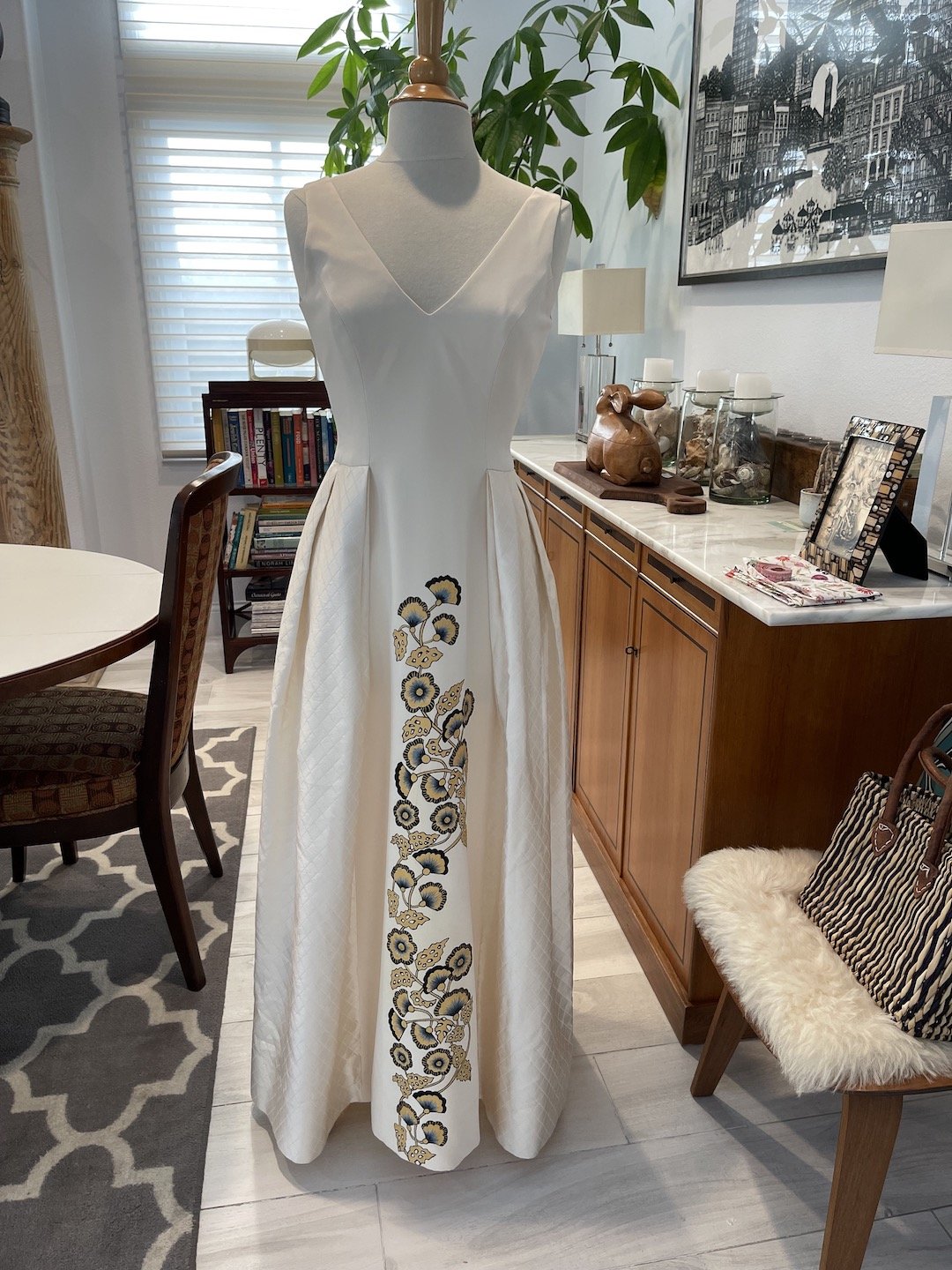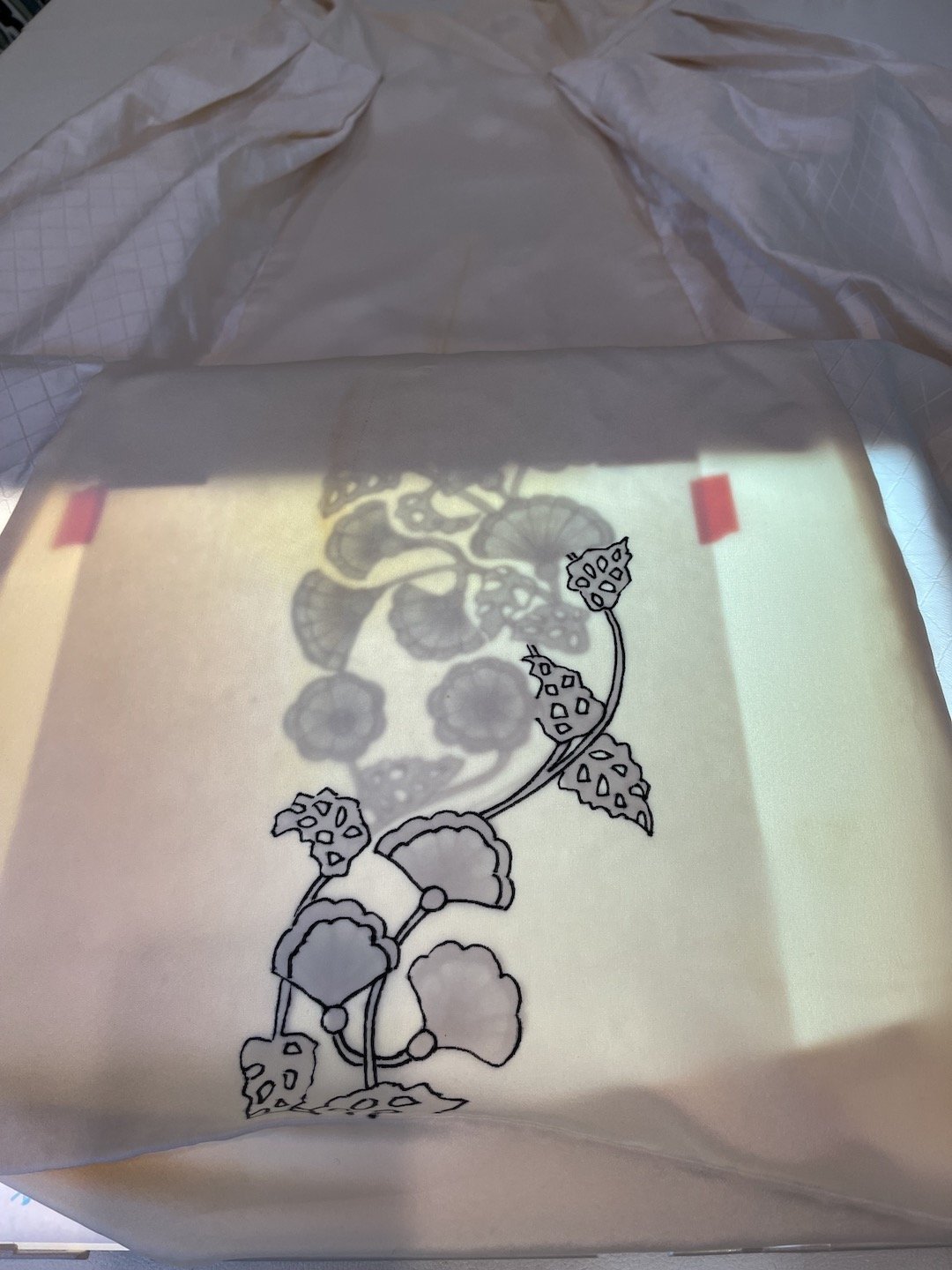Wedding Dress
WEDDING DRESS
This very interesting project was commissioned by a client who found me through social media by doing a search for artists who paint on fabric. She had a beautiful, bespoke, designer wedding dress that was damaged through improper storage. The wedding dress was one of a kind and had a wonderful back story. She hoped to be able to wear it again. The style of the dress itself has longevity and could and should be worn again for special events . We met to speak about the scope of the project and what she had in mind. The damaged part of the dress was the front panel. We spoke about painting a design and also about embroidery options.
The completed restoration!
After examining the dress, I realized that the double layer of fabric would have meant a significant amount of unpicking to be able to embroider – which would have also had the potential to destabilize the overall construction of the garment. It was decided to paint a vine-like design up the front panel to disguise the yellow stain from the disintegrated foam hanger. I approached the project in four stages, outlined below.
Image of the original damage
First step was to come up with four design croquis with color swatches to show the client.
The style of the dress was timeless but had a retro art deco feel to it which is what I went with for inspiration. The client picked the deco flowering fan vine design in a gold, black and grey/blue color story.
The second stage was to start testing the fabric paints on swatches of similar silk fabric to the dress itself. Not all gold fabric paints are created equal so the test swatches were crucial to determine which gold tone would be appropriate. We settled on a beautiful antique gold. The preliminary tests were also important to establish the client’s hierarchy of colors.
The third stage was to transfer the design onto the dress itself. The original croquis design was blown up 30% to cover the stain and was transferred onto the front panel of the dress using a light box and fabric pen.
The fourth stage was the fun part—actually painting the dress. This was a very meticulous process that had to be done in a very controlled environment. Each color was done separately as a whole and the final details done with a minute brush.
This project gave me so much pleasure as it took me back to my textile design roots. (I went old school and did all the repeat designs by hand). It was wonderful to see a garment that was so meaningful to the client be restored and have a new life. As is so often the case when women come together through textile projects, there was a bonding and a lovely new friendship made.














